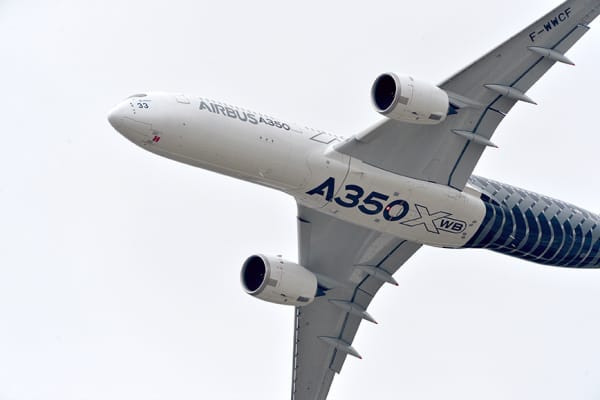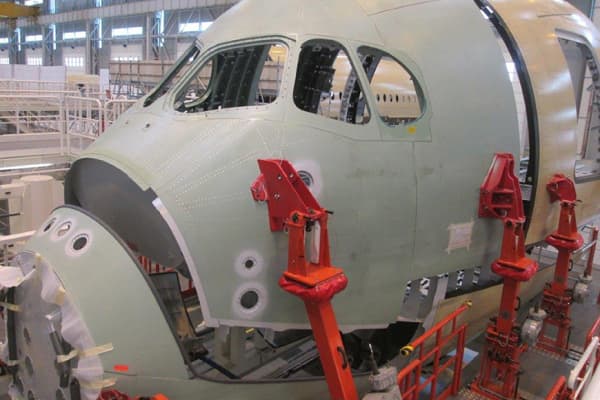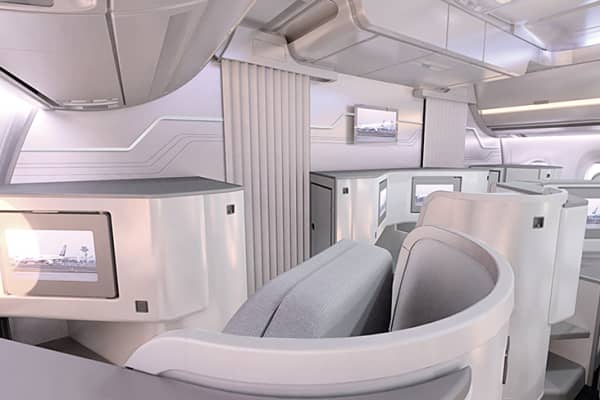Twenty years from now, the 10 largest aviation megacities will each have daily traffic of over 100,000. Together, they will transport 1.5 million long-haul passengers every day. You could well be among them.
Global aviation is as resilient as the undercarriage of a wide body jet. World traffic has grown 85 percent since 9/11 despite a range of shocks – from epidemics and volcanic eruptions to volatile fuel prices and the global downturn following the 2008 banking crisis. A new global market forecast by Airbus predicts passenger traffic will increase by 4.6 percent a year between now and 2034, with growth particularly strong in developing and emerging markets.
"To try to ease bottlenecks, very large aircraft like the A380 will become more common."
Airbus foresees a yearly revenue per kilometer (RPK) growth of 5.8 percent in developing and emerging markets such as China, India and the Middle East. Developed markets in Europe and North America can look forward to a more modest, but still healthy, 3.8 percent rise in RPK.
The Airbus report paints a rosy future for both airlines and aircraft manufacturers, with 32,600 new aircraft being delivered over the next 20 years. Airports are set to get more crowded. So are the planes themselves as airlines squeeze every last drop of RPK from their fleets. To try to ease bottlenecks, very large aircraft like the A380 will become more common.
New aviation hubs will emerge – particularly in Asia and the Middle East. Planes flying between these so-called big point destinations will carry a higher proportion of first- and business-class passengers. The bigger the city, the wealthier the population – if that trend continues, the front end of the plane might not remain quite so exclusive.
The Middle East – endless growth?
Size matters when it comes to flying in the Middle East. It is the only region in the world where the twin-aisle fleet is bigger than the single aisle and over the next 20 years almost one in six new deliveries will be very large aircraft like the Airbus A380. That compares to just 1 percent in North America and 5 percent in Asia Pacific, the nearest rival to the Middle East in terms of very large aircraft (VLA) demand.
"“Overall, more than $40 billion worth of airport expansion is in the regional pipeline.”"
The price of oil is a double-edged sword for carriers in the Middle East. Lower prices mean lower operating costs but at the same time they hit economic growth among oil-rich members of the Gulf Co-operation Council (GCC). Fortunately, the region is located at a global crossroads for international routes and is not reliant on regional traffic.
"Hubs such as Dubai, Abu Dhabi and Doha are attracting increasing transcontinental air travel due to their strategic location between Europe and Asia, Africa and Australasia. Overall more than $40 billion worth of airport expansion is in the regional pipeline, making the Middle East the fastest growing region in the world in terms of aviation capacity," says Fouad Attar, Managing Director, Airbus Middle East.
But Attar underlines that expansion of airport infrastructure alone will not be enough to cope with demand. "Large aircraft, such as the A380, tackle part of this issue in regions where the traffic growth is more aggressive – like in the Gulf region – by offering an important increase in passenger capacity with less demand on airport infrastructure."
Despite the ups and downs of fuel prices, Attar is bullish about the outlook for his industry in the region. "The Middle East's role in international aviation will continue to grow rapidly in the next couple of decades, particularly as economic and population growth in countries such as China, India and the greater Asia Pacific region are likely to remain steady. The benefits are obvious, particularly for the leading GCC carriers."
The not-so-Far East megacities
Only the sound of wind and a faint electronic hum can be heard as the maglev train heads at 400 kilometers an hour towards one of the great aviation megacities of Asia. It is 2034 and Shanghai and Beijing have become dominant travel hubs. These Chinese cities have seen a four-fold growth in air traffic in 20 years and have overtaken London as a long-haul hub. Chinese domestic air passenger traffic has also taken off, becoming the busiest in the world.
Population and economic growth are driving a surge in air travel not only in China, but across the whole of Asia Pacific. The region is on an aircraft spending spree. Airbus expects 12,596 new aircraft to be delivered in this part of the world over the next two decades – that's over a third of the global total and a bigger market share than Europe and North America combined.
Emerging markets and the emerging middle class
Flying is a middle class activity and the world is becoming increasingly middle class. Nowhere is this transformation more apparent than in the emerging economies. 6 billion people live in the rapidly expanding markets of China, India, Middle East, Africa and Latin America. Today just 25 percent of them take one trip per year, but this will increase sharply to 74 percent by 2034.
"When people have disposable income they use it to fly."
"Here's the real growth story. It's the movement of people into the middle class in the emerging markets around the world. If you go up to about 20 years from now, 55 percent of the world is going to be middle class," predicts Airbus Chief Operating Officer for Customers John Leahy. There's one thing we have learned since the dawn of the aviation age; when people have disposable income, they use it to fly.
In 2034, 16 out of the 20 largest origin and destination traffic flows will involve emerging regions. The infrastructure is still lagging behind mature markets, but investment in airport modernization is helping them to catch up.
Africa's population is growing faster even than China and India. It is estimated that it will be home to one in five people by 2034.
The aircraft fleet will increase by 170 percent to cope with rising demand, especially in traffic between African countries. Africa, however, has further to climb than more developed economic regions and new aircraft deliveries over the next 20 years represent less than 5 percent of the world total.
Air travel has consistently outperformed the economy in the Commonwealth of Independent States. Over the past 15 years, real gross domestic product grew on average 4.3 percent, while traffic increased by 8.5 percent. By 2034, the passenger fleet is forecast to more than double to 2,016 aircraft.
Latin America and the Caribbean is one of the most urbanized regions in the world, with propensity to travel in countries like Chile, Brazil and Colombia, expected to reach the levels achieved by more mature economies by 2034.
Download the full report: http://www.airbus.com/company/market/forecast/
About Airbus
Airbus produces the most modern and comprehensive aircraft family on the market, complemented by the highest standard of product support. Their manufacturing operations around the world set industry benchmarks in quality and efficiency standards. The company helps shape the future of air transportation and drive sustainable growth around the world. Based on a deep understanding of ever-changing market needs, Airbus pioneers incremental innovative technological solutions and seeks the most efficient sourcing and manufacturing possible - so airlines can grow and people can connect.





